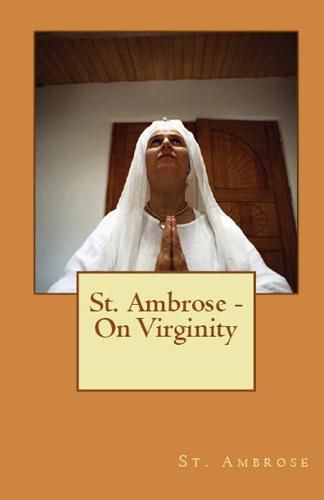Readings Newsletter
Become a Readings Member to make your shopping experience even easier.
Sign in or sign up for free!
You’re not far away from qualifying for FREE standard shipping within Australia
You’ve qualified for FREE standard shipping within Australia
The cart is loading…






This title is printed to order. This book may have been self-published. If so, we cannot guarantee the quality of the content. In the main most books will have gone through the editing process however some may not. We therefore suggest that you be aware of this before ordering this book. If in doubt check either the author or publisher’s details as we are unable to accept any returns unless they are faulty. Please contact us if you have any questions.
THE state of Virginity is undoubtedly commended in Holy Scripture; both by our Lord and St. Paul, but learned men have differed in their opinions as to the original customs and rules observed by virgins in the earliest ages. Some suppose that from the very beginning it was the custom for them to make a solemn profession of the virgin life, and to live together in common. Others consider that their vows were private, and they lived sometimes together, sometimes in the homes of their parents. Others, again, believing that there was no more than a simple purpose on the part of the virgins signified by the veil, and the simplicity of their dress, attribute the first commencements of community life to St. Ambrose himself.
From the days of the apostles there were some who devoted themselves to God in a life of chastity, and that later on the promise or vow was made in the presence of others–the bishop, clergy, and friends. These virgins lived at home with their parents, whilst the times of persecution endured, making it practically impossible for them to live elsewhere. Common life amongst them would seem to have commenced in the East, and St. Athanasius, when, seeking refuge from the Arians, he came to Rome, introduced the custom to the Western Church.
$9.00 standard shipping within Australia
FREE standard shipping within Australia for orders over $100.00
Express & International shipping calculated at checkout
This title is printed to order. This book may have been self-published. If so, we cannot guarantee the quality of the content. In the main most books will have gone through the editing process however some may not. We therefore suggest that you be aware of this before ordering this book. If in doubt check either the author or publisher’s details as we are unable to accept any returns unless they are faulty. Please contact us if you have any questions.
THE state of Virginity is undoubtedly commended in Holy Scripture; both by our Lord and St. Paul, but learned men have differed in their opinions as to the original customs and rules observed by virgins in the earliest ages. Some suppose that from the very beginning it was the custom for them to make a solemn profession of the virgin life, and to live together in common. Others consider that their vows were private, and they lived sometimes together, sometimes in the homes of their parents. Others, again, believing that there was no more than a simple purpose on the part of the virgins signified by the veil, and the simplicity of their dress, attribute the first commencements of community life to St. Ambrose himself.
From the days of the apostles there were some who devoted themselves to God in a life of chastity, and that later on the promise or vow was made in the presence of others–the bishop, clergy, and friends. These virgins lived at home with their parents, whilst the times of persecution endured, making it practically impossible for them to live elsewhere. Common life amongst them would seem to have commenced in the East, and St. Athanasius, when, seeking refuge from the Arians, he came to Rome, introduced the custom to the Western Church.